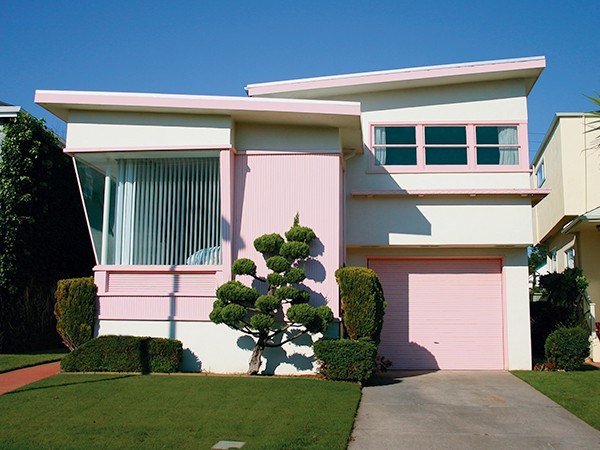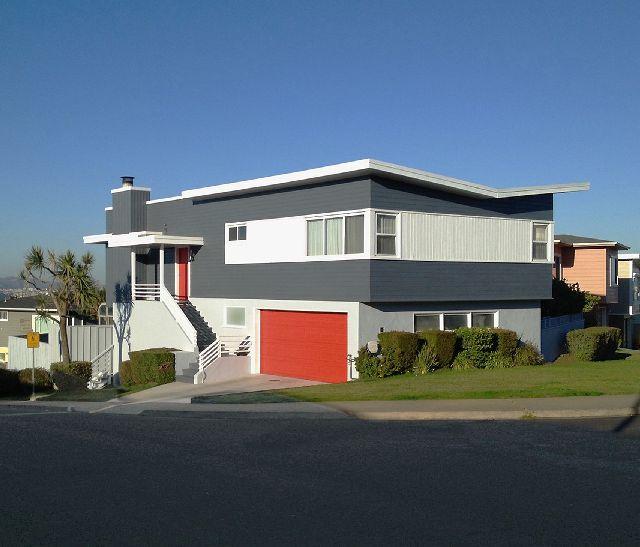
New Film Focuses on the Space-Age Suburb of Westlake
 |
|
|
“I’m going to build a city here someday,” San Francisco developer Henry Doelger told his son one day in the late 1940s as they drove the barren hills just south of the city. He wasn’t lying. Now a new film, 'Little Boxes: The Legacy of Henry Doelger,' explores how Doelger, once the largest homebuilder in America, turned this fog-shrouded region of Daly City into Westlake.
Its next showing is Wednesday evening, April 16, at the Daly City Public Library.
The Daly City neighborhood of Westlake, with its space-agey homes next to French Provincial homes, its Chinese-themed apartments and its glass-walled shopping centers, remains a fun place to visit, in part for its air of genial goofiness.
After all, one of the most popular models in the subdivision, which got underway in 1949, was designed by Ed Hageman as a joke. He figured his boss and mentor, Doelger, would laugh and toss it in the trash.
Instead, the "fish and chips house," as Hageman called it, with its two rooflines angled away from each other and a window that angles away from the house, was built in multiple locations and went on to inspire the designers of Googie coffee shops almost a decade later, architectural historian Christopher VerPlanck says in the film.
Monique Lombardelli, who co-produced the 43-minute film with Rob Keil, is a real estate broker who earlier produced a movie about developer Joe Eichler, 'People Who Live in Glass Houses.' Keil wrote the book the current film is based on, also called 'Little Boxes.'
It’s an entertaining film, ten minutes too long perhaps, with great early footage of San Francisco’s Sunset district when it was dunes and dirt, and where Doelger became the leading builder before venturing south.
“Happy little houses,” Lombardelli calls the homes of Westlake, a comment that catches the tone of the film.
We hear from Doelger’s son and daughter and folks who worked with him, including Hageman. We learn about how efficiently Doelger learned to build, turning out houses for $9,000 apiece, and about how advanced Westlake was in its planning principals.
 |
|
|
Through streets, for example, were largely set off from houses by shopping areas and greenways. And Westlake was designed as a 'complete' community, with shopping, the restaurant Westlake Joe’s, a bowling alley, and medical offices all convenient to homes, and with apartments serving renters.
It’s also a lively film visually, thanks to cool retro brochures and drawings and footage of a rocket-shaped car zooming past to show the optimism of the 1950s.
A section about the trendsetting schools architect Mario Ciampi designed in the area is tangential, though worth a movie of its own.
The film itself has a goofy side, including Lombardelli singing the famous Malvina Reynolds song 'Little Boxes' (“made of tick-tacky”), which was aimed at houses such as Doelgers that sprouted up on suburban hillsides during the time.
That’s the one part of the film Doelger would not have enjoyed. “Ooh, he hated that song,” Ed Hageman has said.
- ‹ previous
- 438 of 677
- next ›



